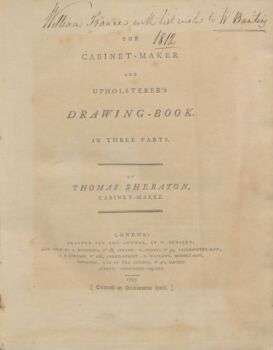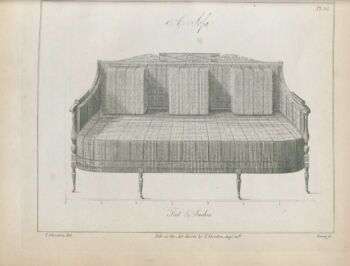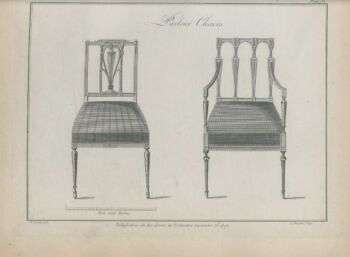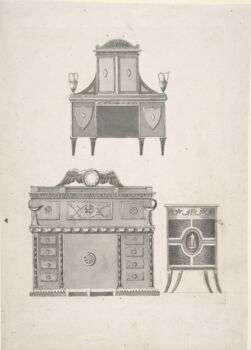The Sheraton Style was especially important from 1790 to 1820. Today, it is known as one of the greatest episodes in the golden age of furniture in England.

Image source:https://en.wikipedia.org/wiki/Sheraton_style
Thomas Sheraton was born in Stockton-on-Tees in 1751. While he was young, he taught himself geometry and how to draw. Although he never received specialized training to improve his working skills, he probably apprenticed to some local cabinet-makers shop. Often, he called himself a mechanic, with little advantages coming from academic education. In 1790, when he was forty years old, he moved to London, England.
His Major Works
- “The cabinetmaker’s and Upholsterer’s Drawing Book,” published by Sheraton in four volumes in 1791, shortly after Hepplewight‘s publication.
- “The Cabinet Dictionary,” published in 1803.
- The first volume of “The cabinetmaker, Upholsterer and General Artist’s Encyclopaedia,” published in 1805.
He is considered one of the “big three” English furniture makers of the 18th century, along with Thomas Chippendale and George Hepplewhite.



About Sheraton Style
Sheraton furniture featured contrasting veneers and inlays. Often, it dealt with woods, such as tulipwood, birch, ash, and rosewood. For the base, satinwood was his favorite, along with mahogany, beech, and walnut.
His way of work can be recognized by:
- Rectangular and rectilinear frames, in contrast with Heppelwhite’s
- Straight, tapered, legs
- Motifs such as urns, rosettes, and flowers
- Japanese motifs

Image source: https://search.creativecommons.org/photos/09675afa-68d9-42d1-8a1c-c0412077a4a6 by AnonymousUnknown author
Info source: https://study.com/academy/lesson/sheraton-furniture-history-style-characteristics.html
